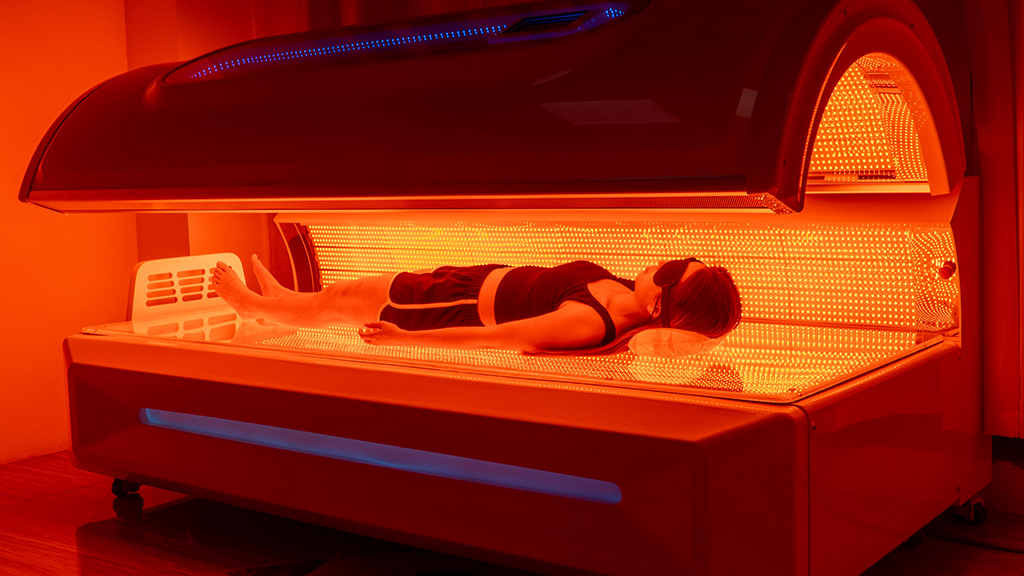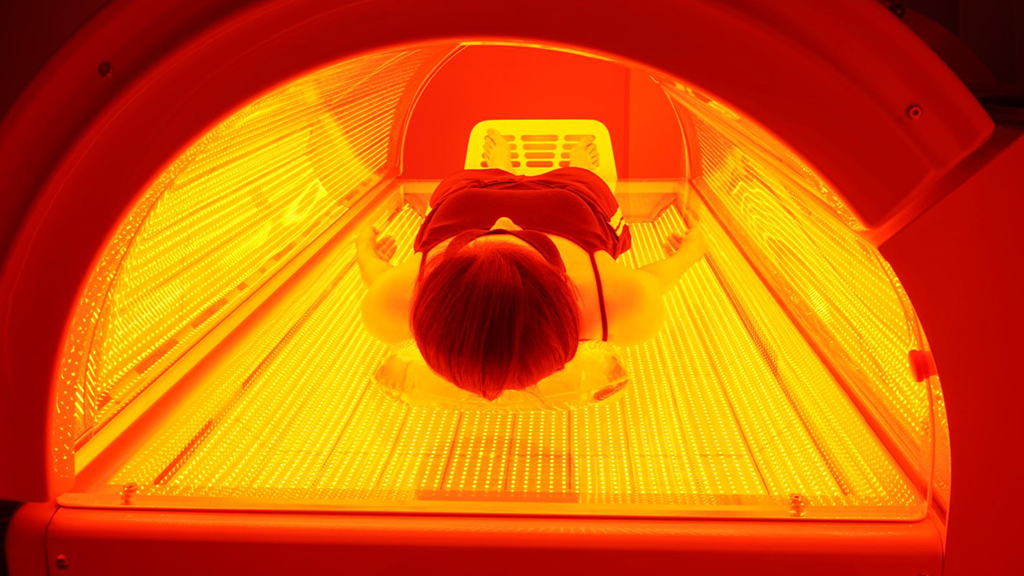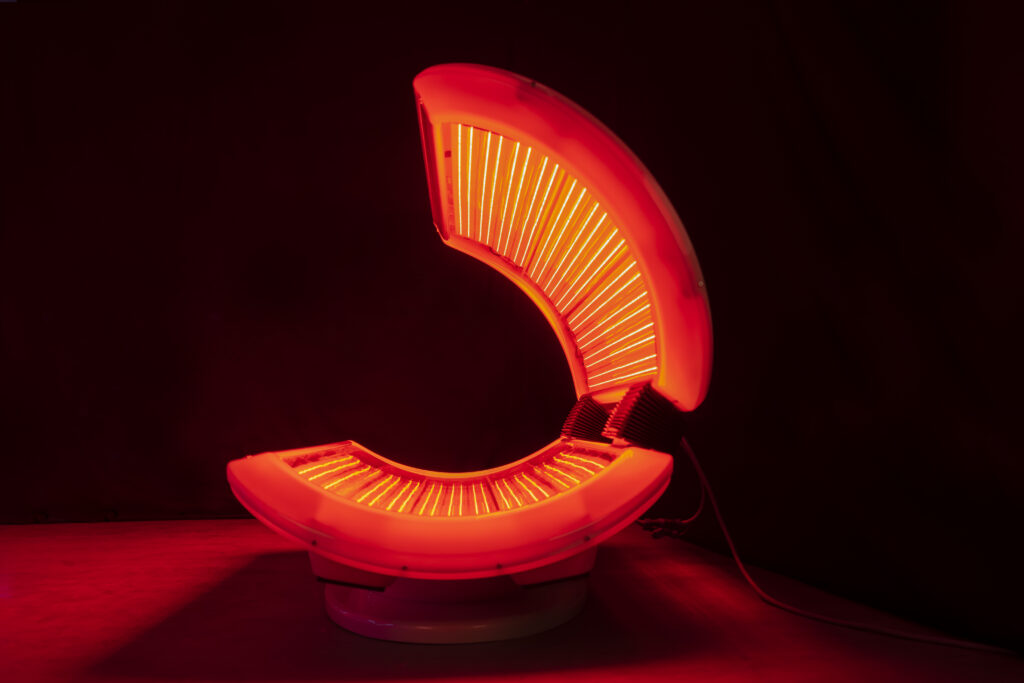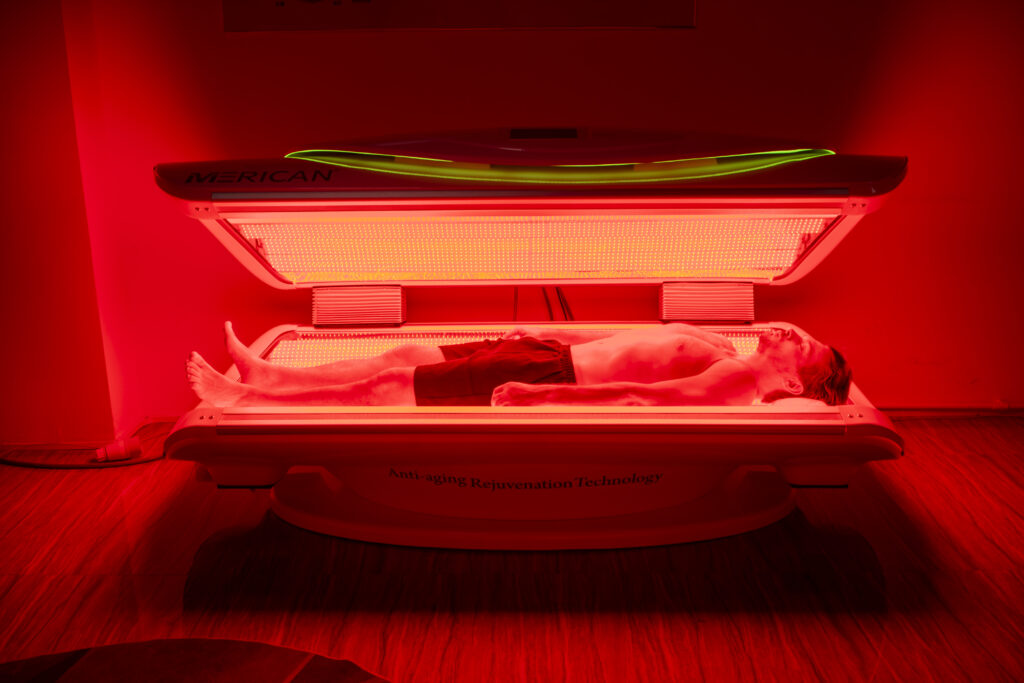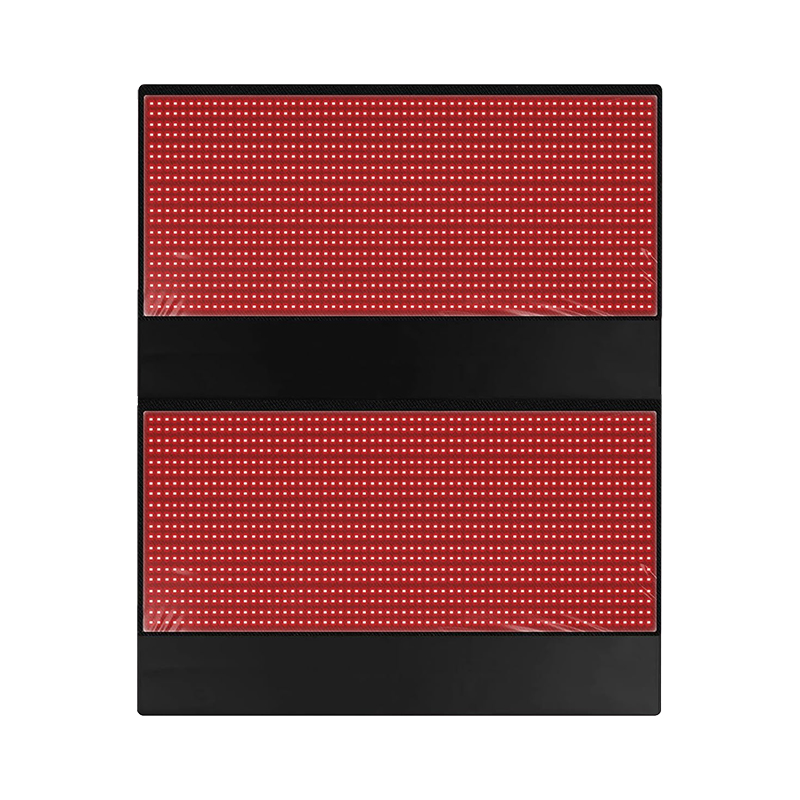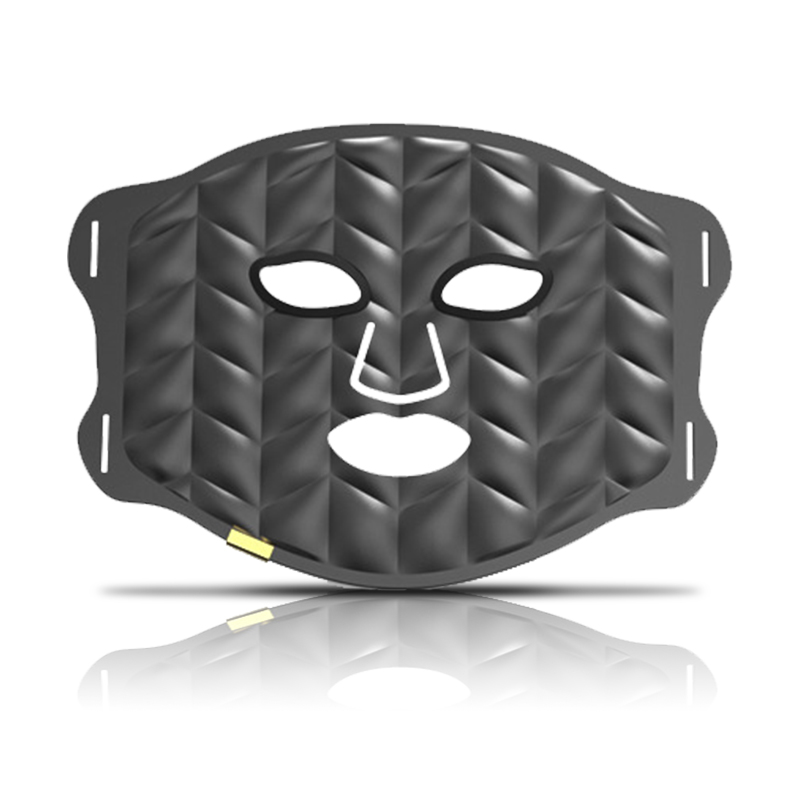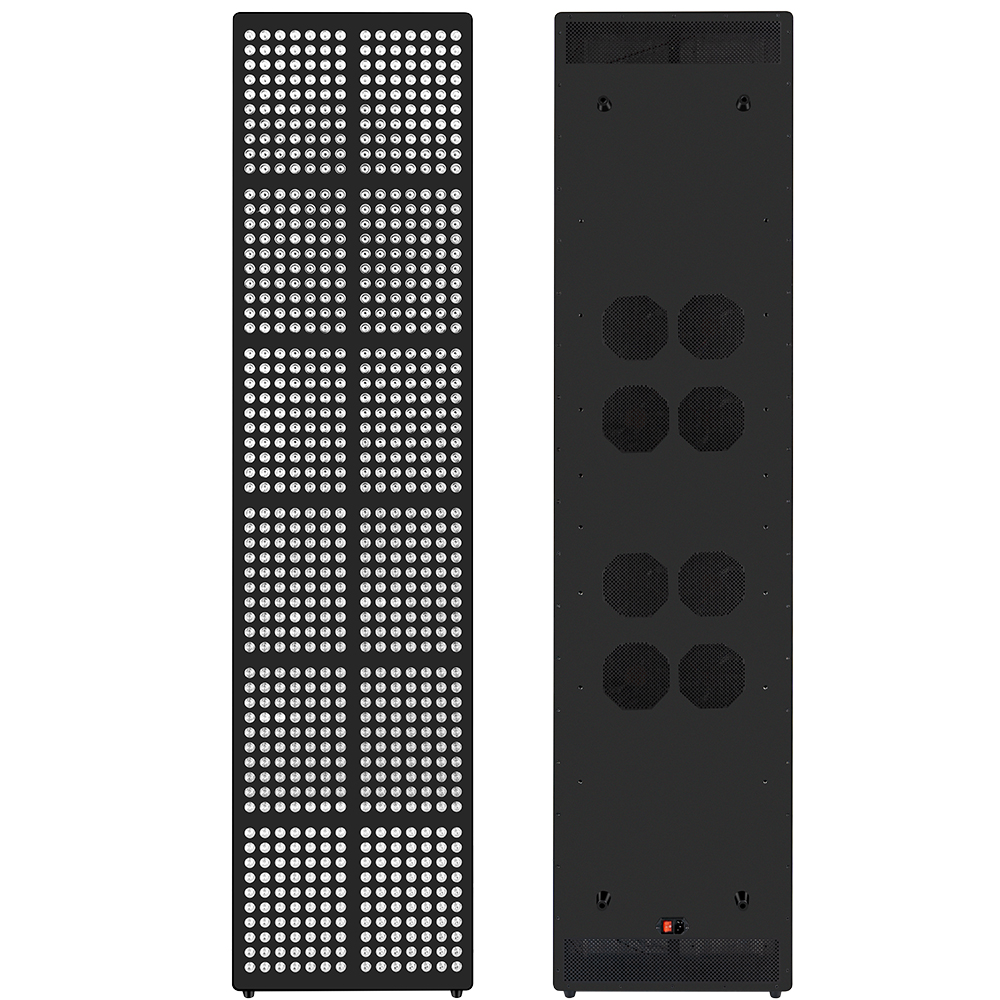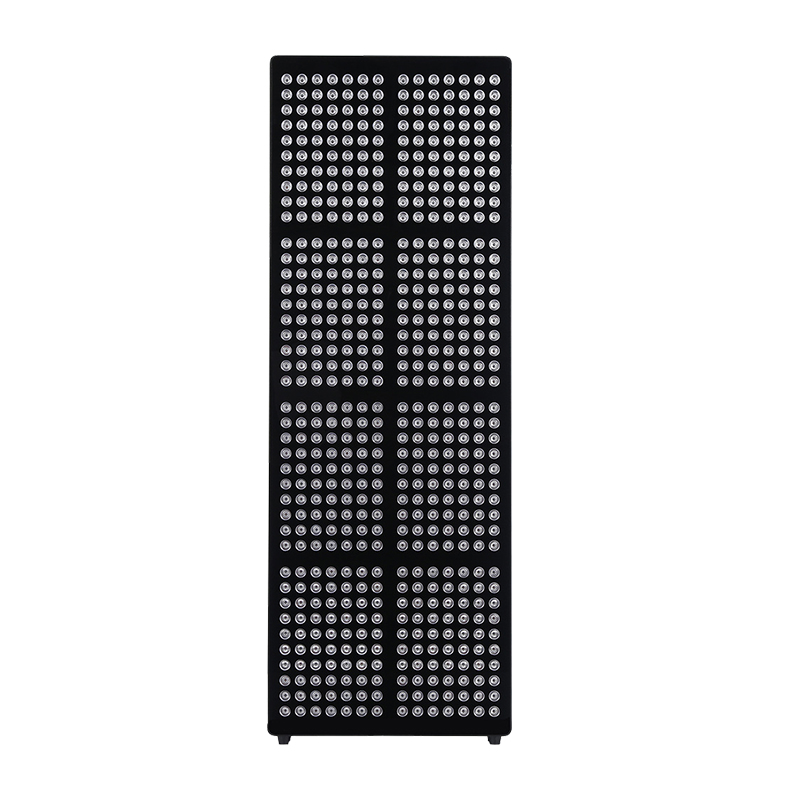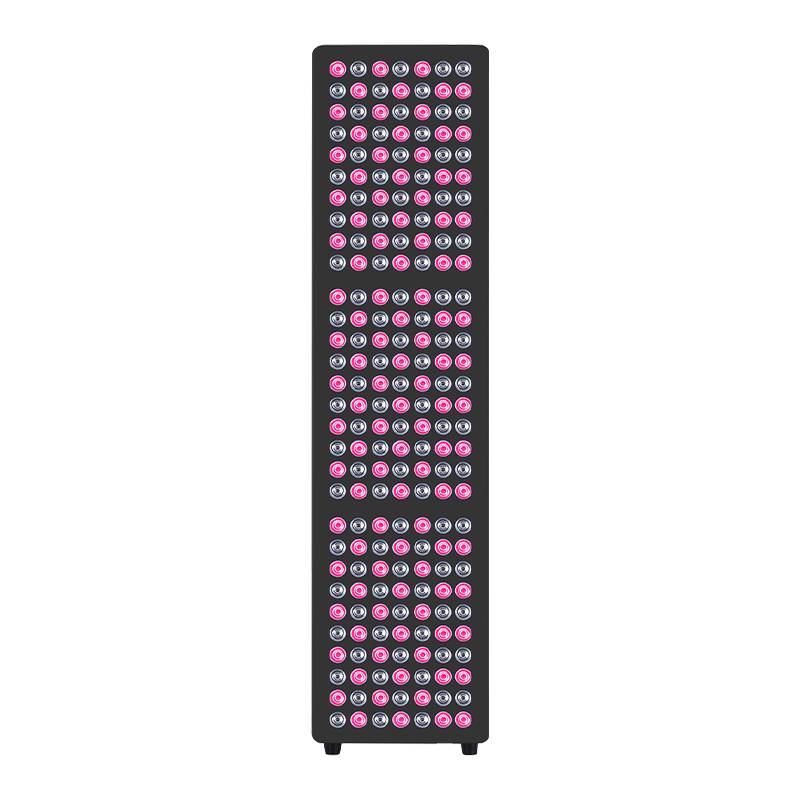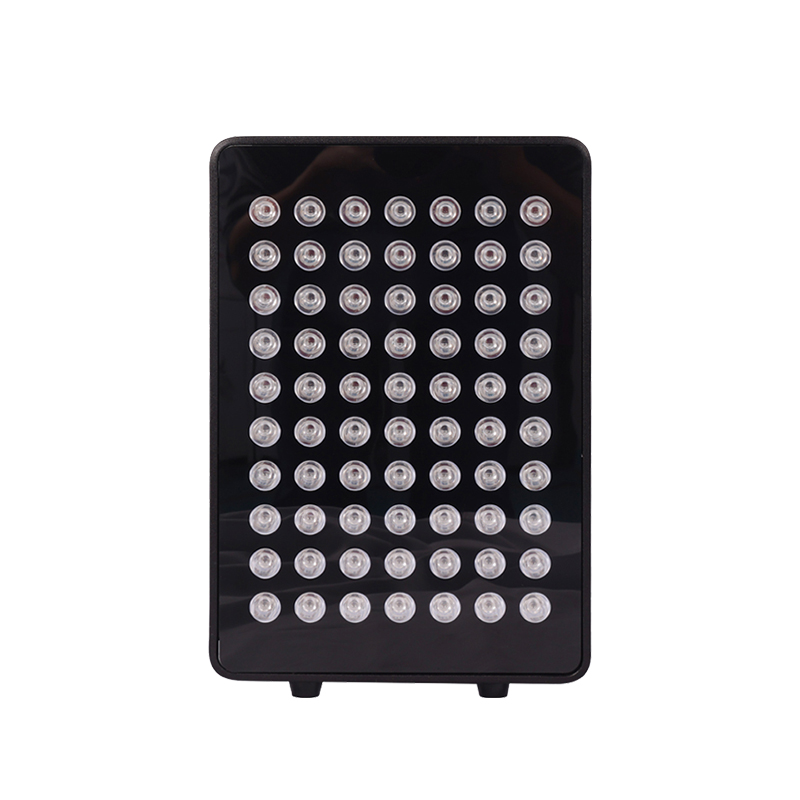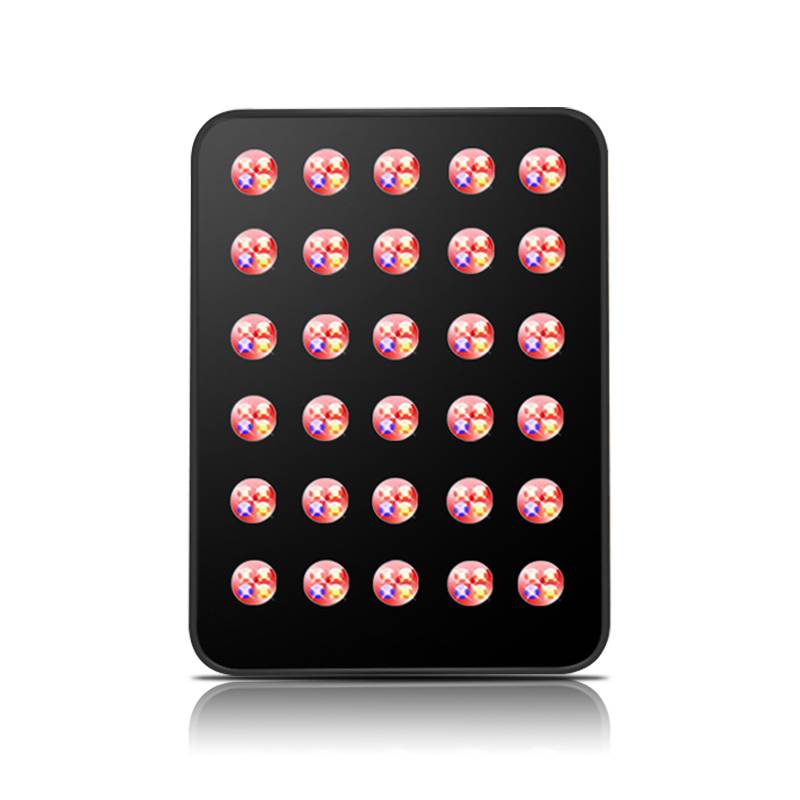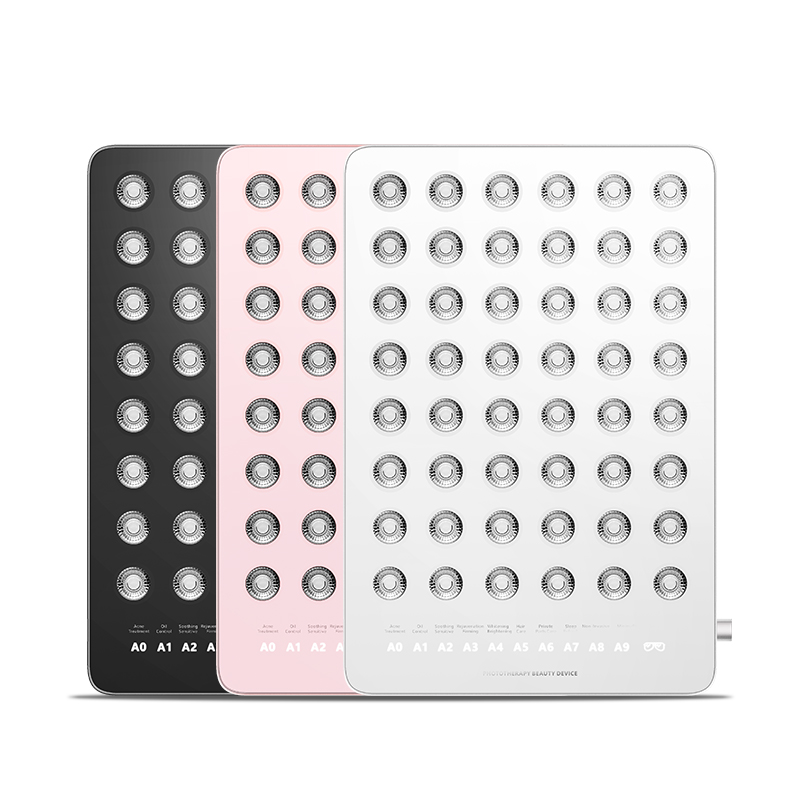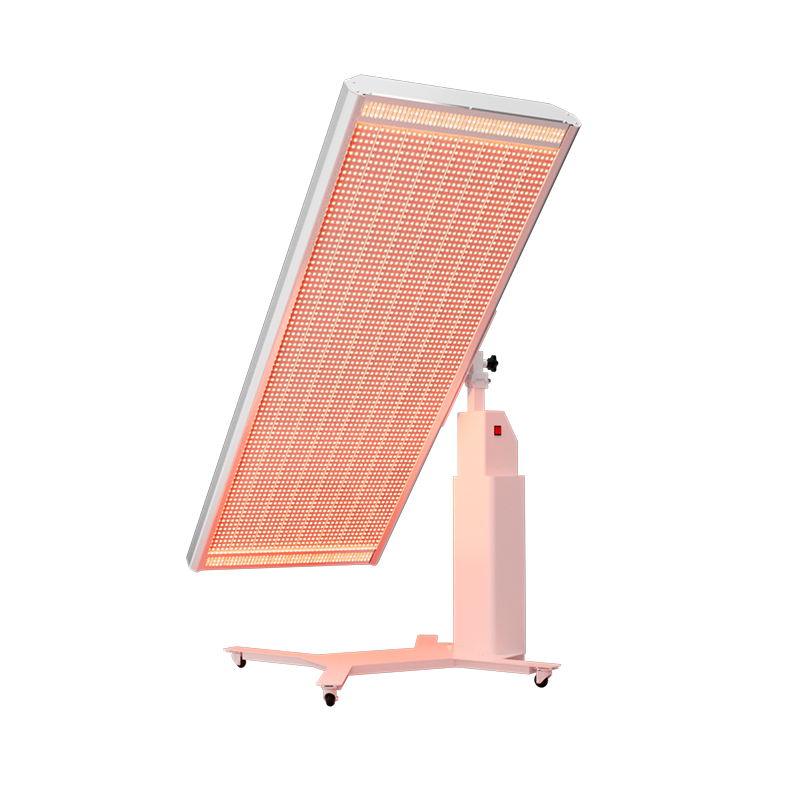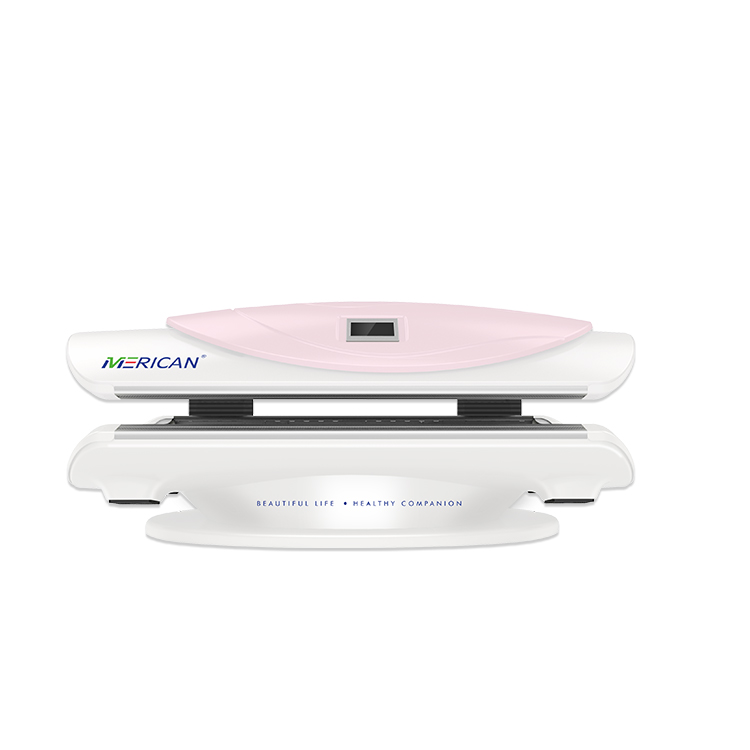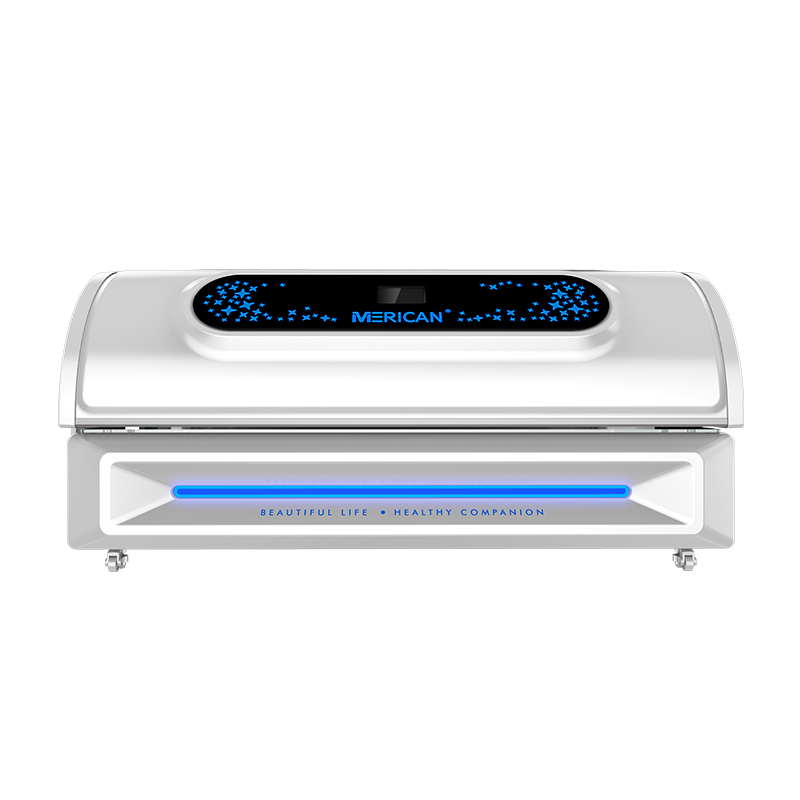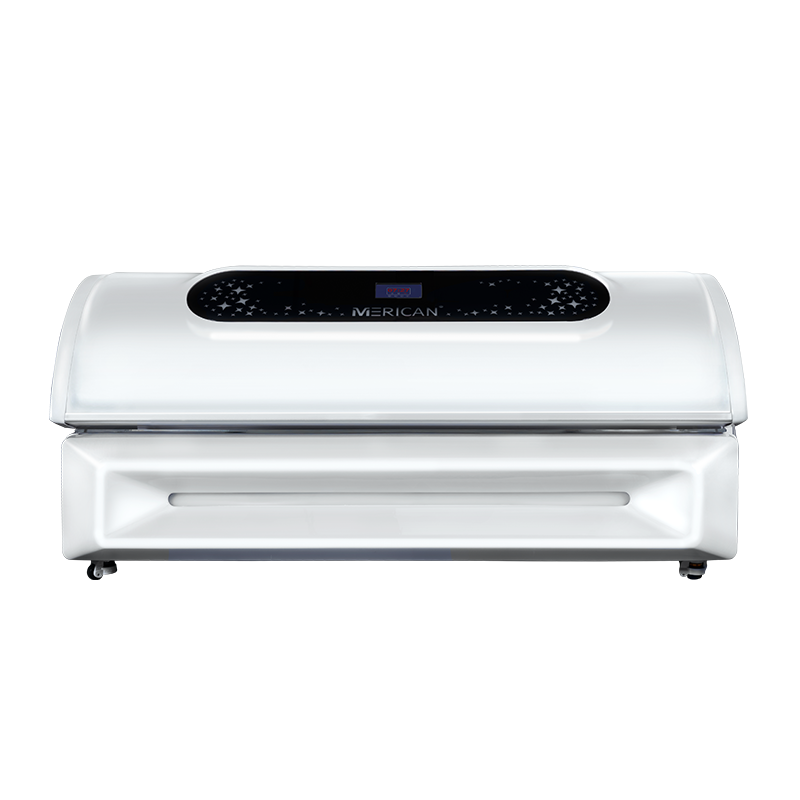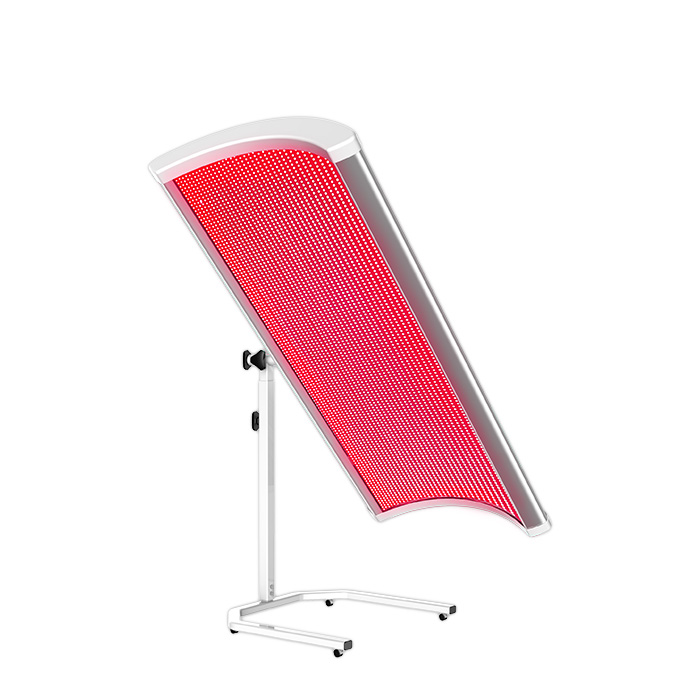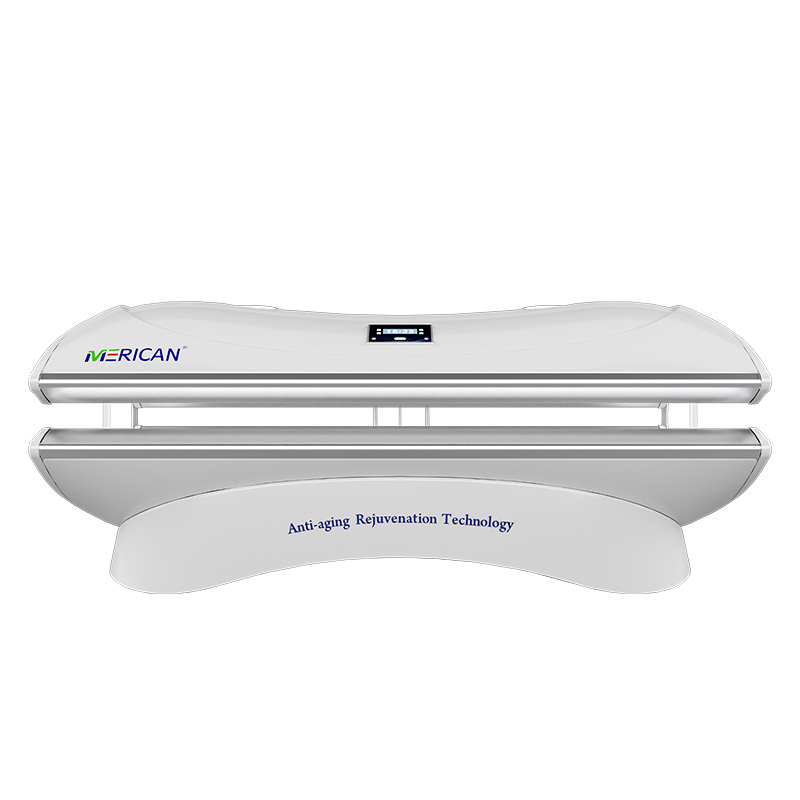光療法の魅力的な世界に飛び込むとき, あなたは頭を悩ませて尋ねていることに気づくかもしれません, 「赤外線療法と赤色光療法の違いは何ですか?」?どちらのタイプの光療法にも独特の特性と利点があり、ウェルネス界で人気があります。. それで, このトピックに光を当てて、赤色光と赤外線について調べてみましょう, あなたに何ができるか!
レッドライトセラピーとは何ですか?

赤色光療法 近年注目を集めている, 特に美容・健康業界では. しかし、それは正確には何ですか? 赤色光療法は低波長の赤色光を利用します。, 通常は周りに 600 に 700 ナノメートル. 暖かくて魅力的な、居心地の良いキャンプファイヤーの輝きをイメージしてください。, 圧倒的な暑さはありませんが、. LED デバイスやレーザーなどの光源がこの光を発します。, さまざまな用途の定番となっています, スキンケアから筋肉の回復まで.
赤外線光療法とは?
今, ギアを変えて詳しく見てみましょう 赤外線. このタイプの光は波長が長いです, 通常はその間 700 ナノメートルと 1 ミリメートル. ヒーターから感じる目に見えない温もりを想像してみてください。心地よくて癒されますが、目には見えないものです。! 赤外線はランプの加熱によく利用されます, サウナ, いくつかの種類の治療器具さえも, しかし、健康上の利点も満載です.
赤色光と赤外線の主な違い
これは赤色光療法と赤色光療法の比較表です。. 赤外線療法:
| 特徴 | 赤信号 | 赤外線 |
| 波長 | 600-700 ナノメートル | 700 ナノメートル – 1 ミリメートル |
| 可視性 | 人間の目に見える | 人間の目には見えない |
| 浸透深さ | 浅い, 主に皮膚表面に影響を与える | もっと深く, 筋肉や組織に浸透します |
| 熱の影響 | 最小限の熱 | 熱を発生させてより深いリラクゼーションをもたらします |
| 一般的なアプリケーション | 肌の若返り, アンチエイジング, ニキビ | 筋肉の回復, 痛みの緩和, 解毒 |
| 気分の向上 | セロトニン生成を刺激する | 全体的なリラクゼーションと幸福感を改善する可能性があります |
| 安全性 | 一般に安全でリスクは最小限に抑えられています | 一般的に安全; ガイドラインに従う |
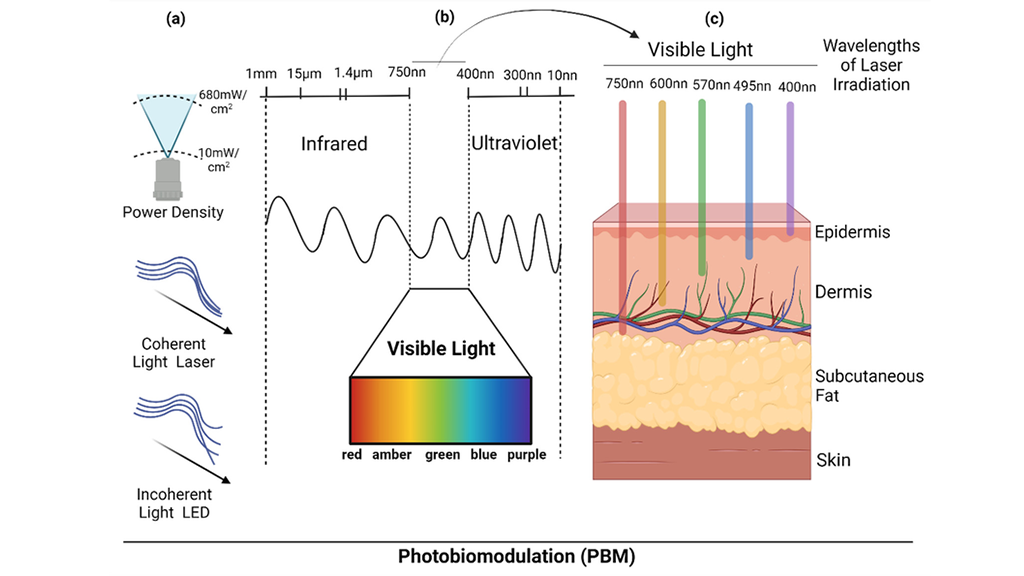
1. 波長の比較
ここからは少し技術的な話になります, でもしっかりしてください! 赤信号と赤信号の議論における主な違い. 赤外線はその波長にあります. 赤い光は人間の目に見える, 赤外線はそうではありませんが、. この区別は、それらが身体とどのように相互作用するかにおいて重要な役割を果たします。.
赤信号, より短い波長で, 主に皮膚の表面に影響を及ぼします. 顔に当たるけどあまり浸透しない、そよ風が吹いているような感じ. 一方で, 赤外線は組織の奥深くまで浸透することができます, 根本的な問題の治療をより効果的にする. 穏やかなマッサージと深層組織マッサージのようなものだと考えてください。どちらにもそれぞれの長所があります。, しかしそれぞれは異なる目的を果たします.
2. 浸透深さ
赤外線の顕著な特徴の 1 つは、赤色光と比較して皮膚の奥まで到達する能力です。. 赤色光は主に表面に作用しますが、, 赤外線は深くまで潜ります, 筋肉や関節に届く. この特性により、赤外線療法は慢性的な痛みや筋肉の緊張に対処している人にとって特に有益です。. 赤色光が優しい表面処理なら, 赤外線は深い修復的な癒しです.
3. 熱の影響
また、赤外線は赤色光よりも多くの熱を発生することにも気づくでしょう。. この温熱効果は筋肉の弛緩に優れています, 緊張や不快感を和らげるのに役立ちます. 対照的に, 赤色光療法は皮膚の若返りと治癒に重点を置いています. それは、暖かく心地よい日光の下でくつろぐのと比べて、暖かさに包まれる心地よい毛布に寄り添うようなものです。.
4. 人間の目での視認性
赤外線を見ようとしたことがある? ネタバレ注意: あなたはできません! 肉眼では全く見えません. 赤信号, しかし, 視認性が高く、落ち着いた雰囲気のためさまざまなシーンでよく使用されます。. 赤い光を鮮やかな夕日と考えてください。, 一方、赤外線は太陽が沈んだ後も長く残る暖かい輝きのようなもので、どちらもそれ自体が美しいものです。, しかし、さまざまな方法で経験しました.
レッドライトセラピーの利点

1. 皮膚の健康と老化防止
それで, 赤外線療法の利点は何ですか, 特に赤色光に関しては? 赤色光療法用, コラーゲン生成促進のチャンピオンです. コラーゲンは私たちの肌のハリと若さを保つタンパク質です. その生産を刺激することで、, 赤色光療法は小じわを軽減するのに役立ちます, 肌の質感を改善する, 厄介なニキビに対処します. 肌の更新ボタンを押すようなものです, 若々しい輝きを取り戻す!
2. 筋肉の回復と痛みの軽減
あなたがアスリート、またはただアクティブに過ごすのが好きな人なら, 赤色光療法は筋肉の回復を助けることができます. 痛みを軽減し、治癒を早めます, トレーニング後に最適です. 長い一日の活動を終えて家に帰り、暖かい赤い光の輝きを浴びながら痛みが洗い流されるのを感じることを想像してみてください。.
3. 気分の向上
少し気分が落ち込んでいます? 赤光療法は気分を高揚させるかもしれません. 暖かい輝きはセロトニンの生成を刺激します, 「幸せホルモン」とも呼ばれています。このブーストにより、気分と全体的な幸福感が向上します。. それは自然な拾い物です, 寒い日の温かいお茶のように!
赤外線療法の利点
1. 深部組織の治癒
赤外線は深部組織の治癒を促進する能力に優れています。. 組織への血流と酸素を増加させることにより, より早い回復と痛みの軽減に役立ちます. 深部組織マッサージを受けたことのある方, それがどれほど若返った気分になるか知っていますか. 今, その経験が光の力を通して起こることを想像してください! 筋肉を落ち着かせるバームを飲んでいるようなものです, 必要なときにすぐに.
2. 循環の強化
赤外線療法のもう 1 つの重要な利点は、血行を促進する能力です。. 血流が改善されると、体全体に栄養と酸素がよりよく届けられます。, それはあなたをよりエネルギーと生き生きとした気分にさせることができます. 体にちょっとしたジャンプスタートを与えるようなものです, あらゆる細胞を活性化する!
3. 免疫システムのサポート
定期的に使用すると, 赤外線療法も免疫システムをサポートする可能性があります. 血行促進と解毒作用により、身体の機能を最適に保つことができます。. これは、健康を維持し、当日に向けて準備を整えるために援軍を送ることだと考えてください。!
赤色光と赤外線の選択
それで, どちらが良いですか: 赤色光療法または赤外線療法? 答えは本当にあなたのニーズによって異なります. 皮膚の健康や表面的な問題に焦点を当てている場合, 赤信号が頼りです. しかし, 深層組織の問題と筋肉の回復に, 赤外線の方が良い選択肢かもしれない. すべてはあなたが何を達成することを目指しているかにかかっています.

利用目的
飛び込む前に, 何を達成したいと思っているかを自問してください. スキンケアでも筋肉の回復でも, 目標は、どのライトが自分にとって最適かを判断するのに役立ちます. 例えば, シワを軽減し、肌の弾力を改善したい場合, 赤色光療法が最も効果的である可能性が高い. ただし、関節痛や慢性炎症に対処している場合は、, 赤外線が答えかもしれない.
治療エリア
どこに治療を適用するかを検討する. より広い領域またはより深い組織の場合, 赤外線は最高のコストパフォーマンスをもたらすかもしれません. 顔やその他のデリケートな肌などの特定の領域をターゲットにしている場合, 赤信号はあなたの親友かもしれません.
安全上の考慮事項
どちらの治療法も一般的には安全ですが、, 留意すべき注意事項がいくつかあります. 過剰な露出は皮膚の炎症を引き起こす可能性があります, したがって、ガイドラインに従い、不明な場合は医療専門家に相談することが重要です. 常に自分の健康を最優先する!
家庭用, 評判の良いブランドのデバイスを選択し、推奨される使用時間を遵守してください。. あなたの肌と体はあなたに感謝します!
結論
赤信号 vs.. 赤外線, どちらにも独自の利点と用途があります. それらの違いを理解することで、ニーズに合った適切な治療法を選択できるようになります. 肌を若返らせたい場合でも、深部組織を治癒したい場合でも, 光療法はあなたの健康の旅を向上させる素晴らしい可能性をもたらします. これらの魅力的なオプションを検討して、自分にとって最適なものを見つけてみてはいかがでしょうか?
よくある質問
1. 赤色光と赤外線を併用できますか??
絶対に! 多くの人は、両方の治療法を組み合わせることで効果が高まり、より包括的な治療が提供できると感じています。.
2. 赤色光または赤外線治療はどのくらいの頻度で使用すべきですか?
それは個人によって異なります, しかし一般的には, 3-5 ほとんどの人にとって、週に 1 回から始めるのが良いでしょう. 体の声に耳を傾け、必要に応じて調整します!
3. 副作用はありますか?
珍しいながらも, 人によっては軽度の皮膚刺激や過敏症を経験する場合があります. ゆっくりと始めて、体の反応を観察するのが最善です.
4. 家庭での使用に推奨されるデバイスは何ですか?
レビューの良い評判の良いブランドを探す. LEDパネル, ハンドヘルドデバイス, 赤外線サウナが人気です, それぞれに異なるメリットがある.
5. 子供もこれらの治療法を使用できますか?
小児に対する治療を開始する前に、必ず小児科医に相談してください。. 安全が第一です, 特に若い人の場合は!


